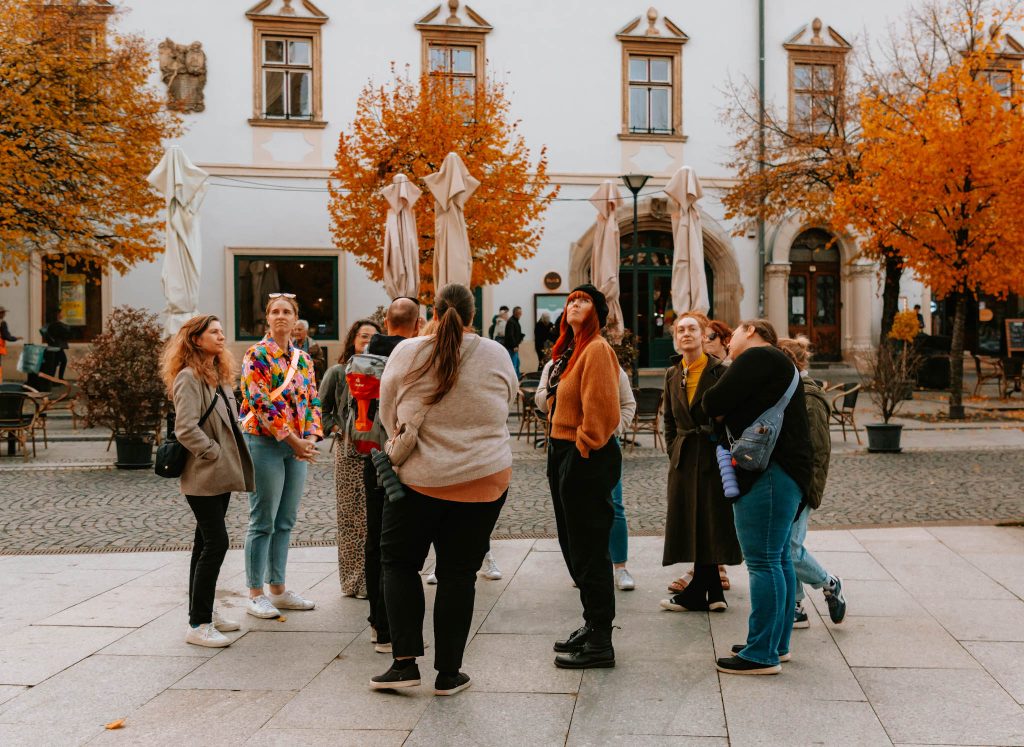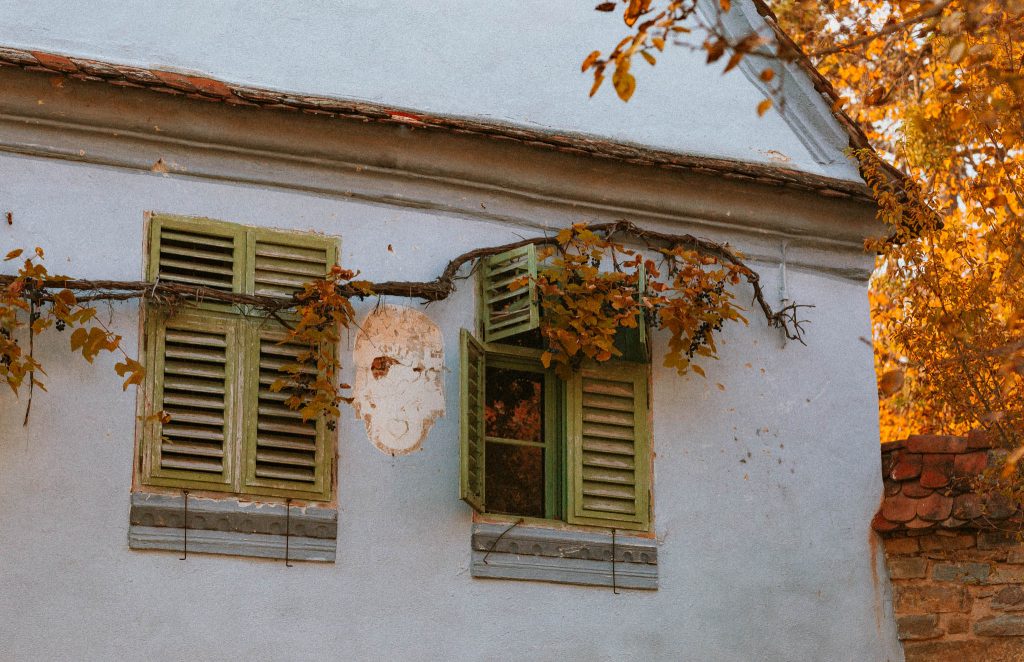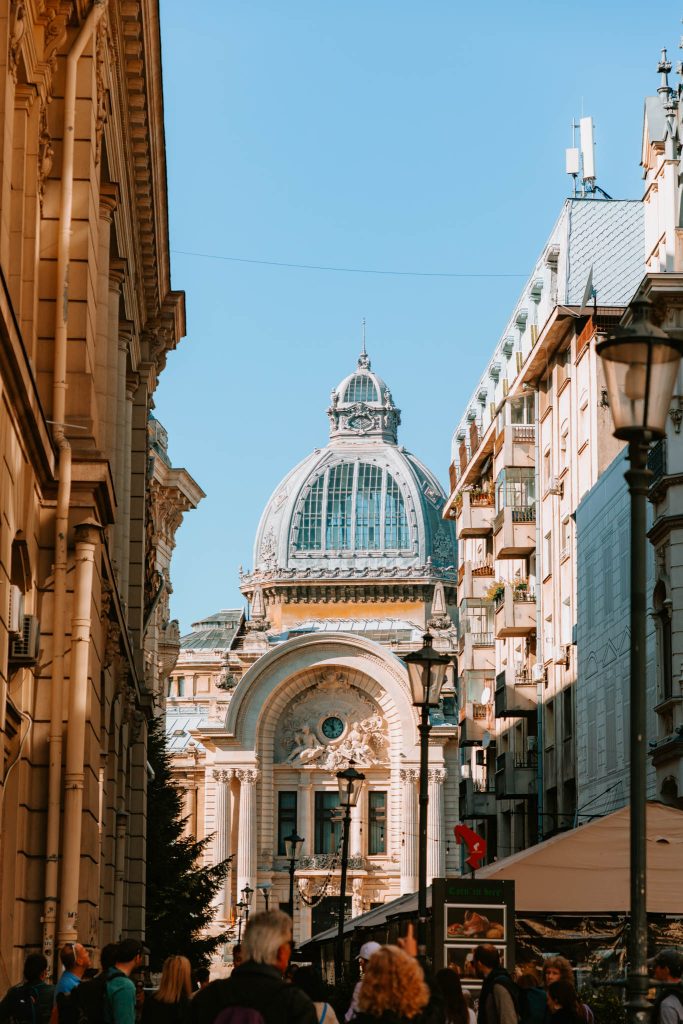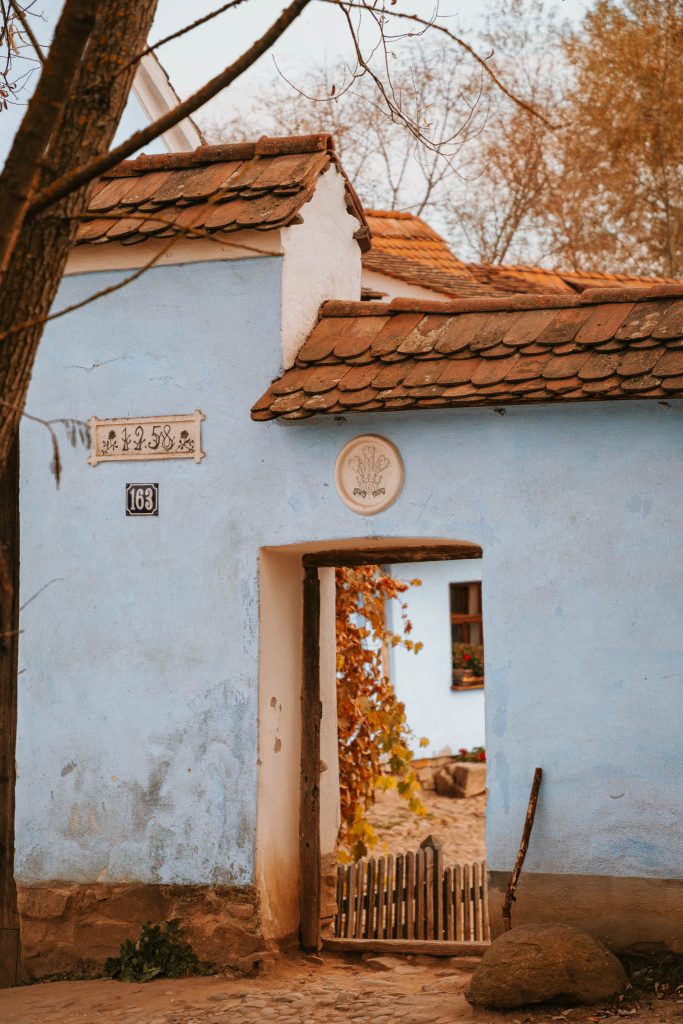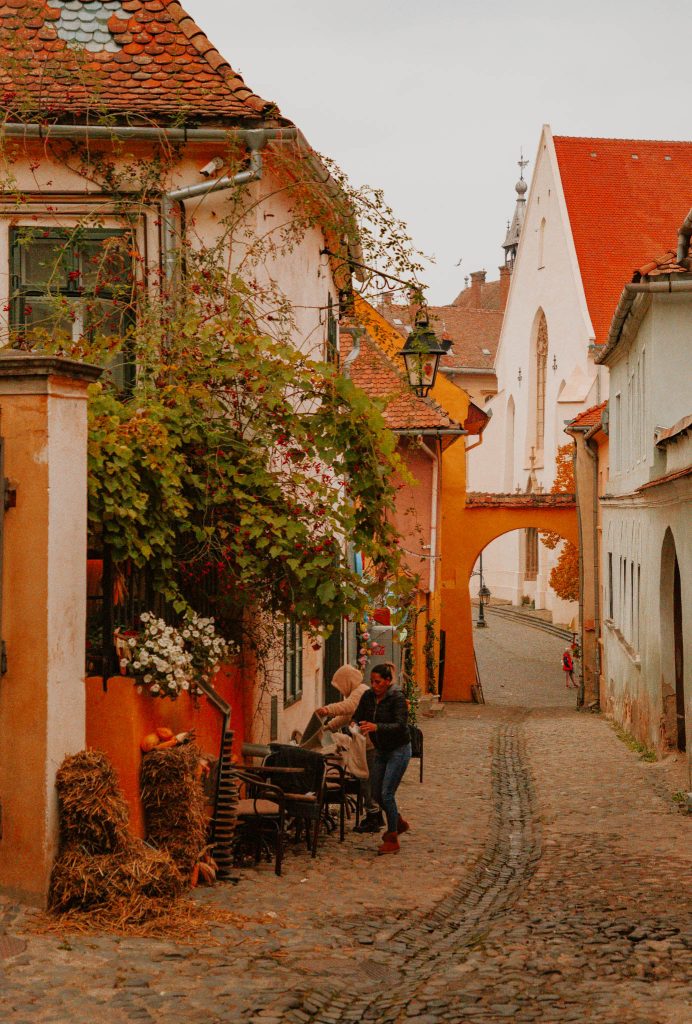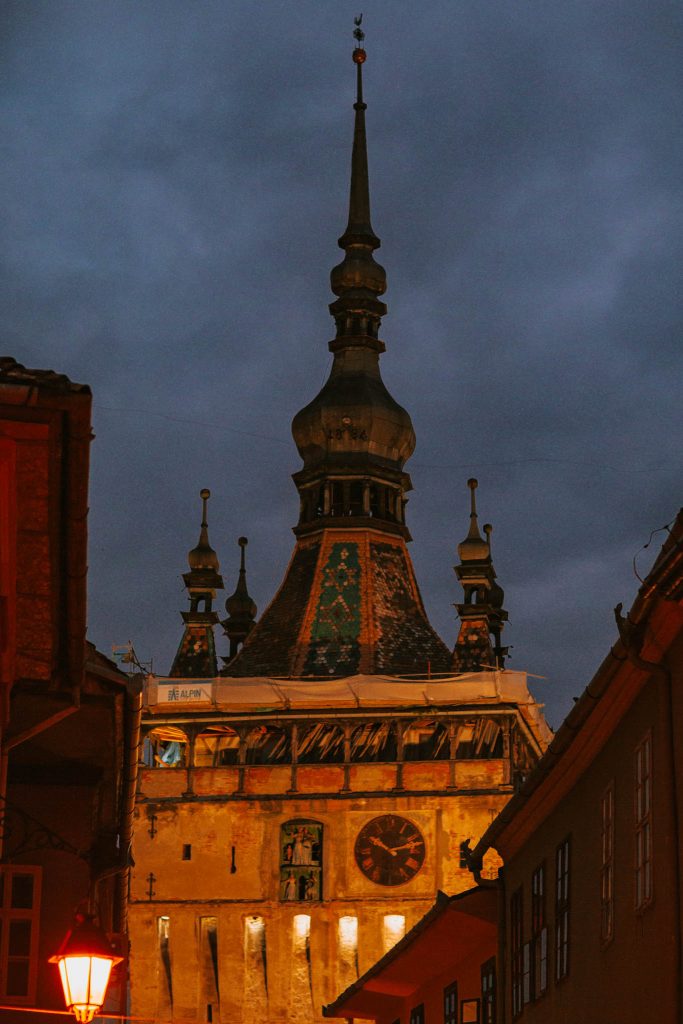I’m not (too) embarrassed to admit that it wasn’t until I was in my twenties that I realised Transylvania was, in fact, a real place.
Until then, I truly believed it was just a fictional destination – a spooky setting found between the pages of a gothic novel, or the eerie backdrop to a horror film.
I had no idea that Transylvania was a legitimate region; one filled with medieval towns, colourful villages, misty mountains and (surprisingly) Romania’s largest university.
One day I happened to be browsing group tour destinations and came across one to Transylvania – a place with airports, buildings and real people. I remember feeling like the earth had moved beneath my feet.
Transylvania wasn’t just a place in my Goosebumps book: it was a real.
Some 15 years later – and to remedy this embarrassing oversight – I thought it was finally time to visit the place I once thought of as Narnia. As part of our yearly tours, we decided to arrange a week long trip to Transylvania – not the Hollywood version, but the actual region – nestled in the heart of Romania and Eastern Europe.
Throughout our road trip around Transylvania, I learned far more than I expected. Our journey also answered many questions I didn’t even realise I had.
Is Dracula’s Castle a real place? Was Count Dracula real? Is Transylvania safe for tourists? What’s the best way to explore the region? And what are the absolute must-see places in Transylvania?
In this blog post, I’ll take you through what I discovered: not just about the myths and legends, but about the real Transylvania: its history, landscapes, people and why it should absolutely be on your travel radar.
Let’s start with the biggest question of them all: is Transylvania even real?
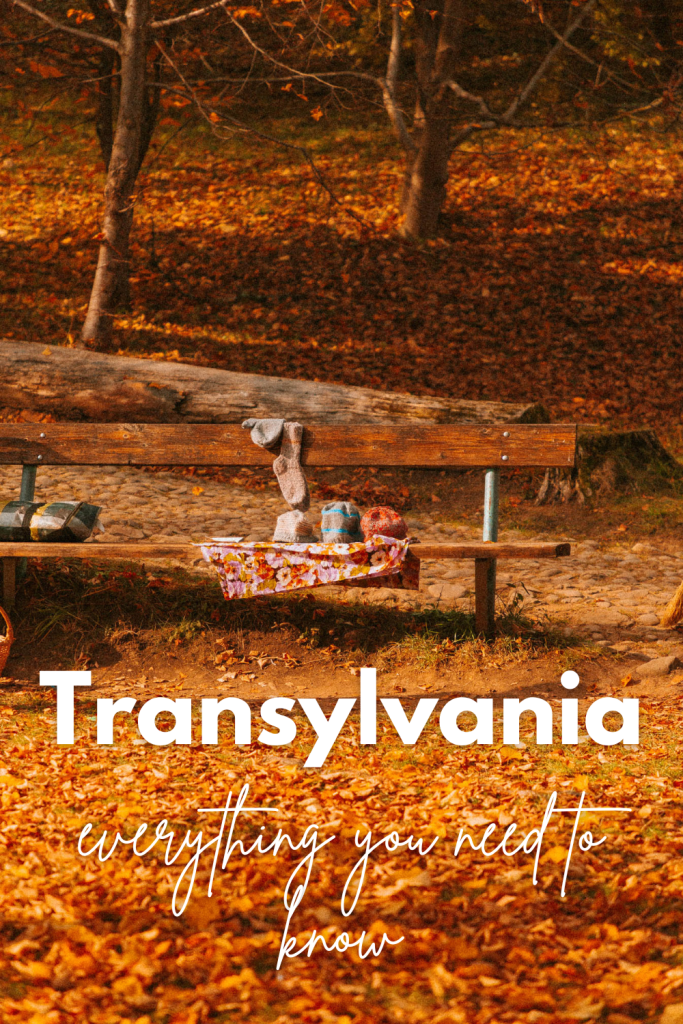
Everything You Need to Know Before Visiting Transylvania
1. Is Transylvania a Real Place?
Yes, Transylvania is a real place.
It also happens to be a breathtakingly beautiful and incredibly welcoming place. A place where ancient traditions are still an important part of everyday life, where the scent of lingering wood smoke fills the air, and where medieval citadels perch on rolling hills.
Home to some of the most beautiful towns in Romania – including Cluj-Napoca, Brasov and Sighisoara, the area is also peppered with countless rural villages – including magical Viscri, where King Charles even owns a home.
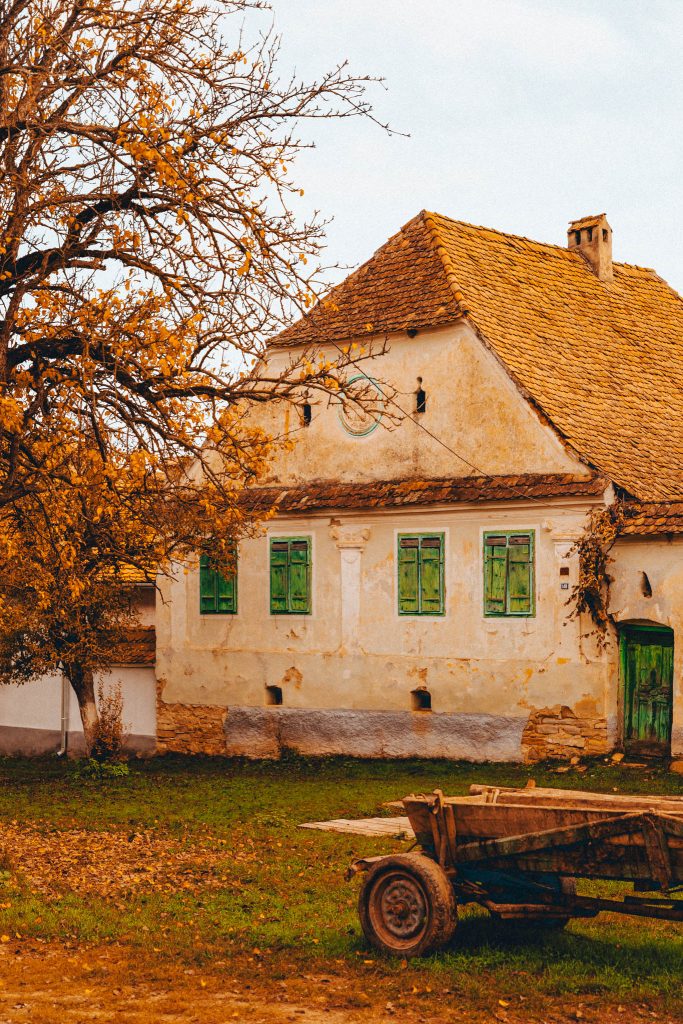
So, where is Transylvania located?
Transylvania is a large, land-locked area (covering roughly 100,000 square kilometres) found in central Romania. Bordered by the Carpathian Mountains, it’s known for its pastoral landscape, fortified churches, dense forests (and resident bears) and – of course – its fairytale castles.
In fact, Transylvania is home to over 100 stunning castles.
Geographically, the area is beautiful. The Apuseni Mountains, found in in western Transylvania, are famous for their extensive cave systems – especially the Scarisoara Cave, which is home to one of the largest underground glaciers in the world. It’s also where you’ll find some of Europe’s last remaining virgin forests (the name – Transylvania – literally means ‘the land beyond the forest’).
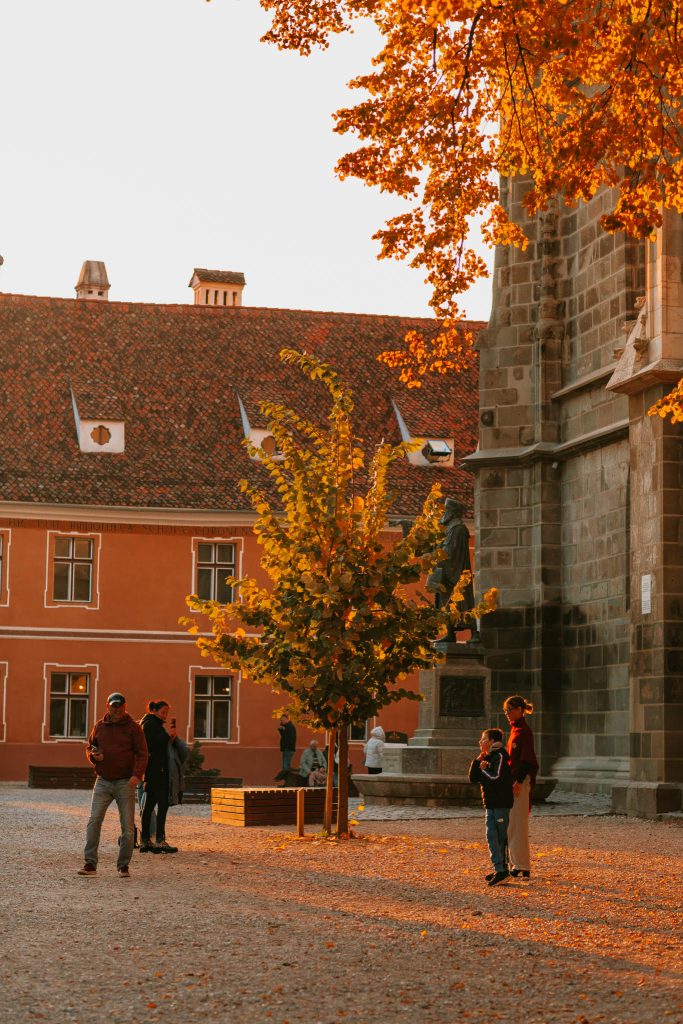
Before I visited Transylvania, I had this vague mental image of a gloomy, mist-drenched landscape filled with bats and howling wolves – but in reality it’s so much more than that.
While you can find this gothic atmosphere in some places (at the very commercialised Bran Castle, for example), Transylvania is much more interesting than its caricature. Shaped by a mix of Romanian, Hungarian, Saxon and even Ottoman influences, it’s one of the most culturally rich areas in Eastern Europe.
Transylvania is therefore a very real place – and one that is much more beautiful and interesting than the pop version suggests.
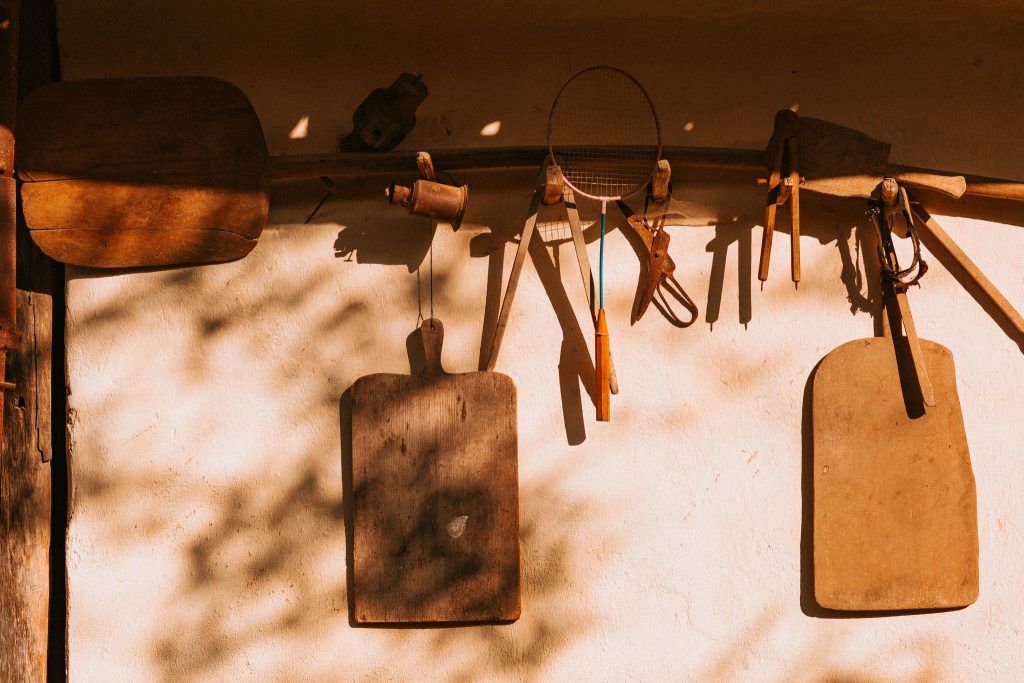
2. What is the History of Transylvania?
While many people know Transylvania for its spooky legends and vampire stories, the real history of the region is far older than most realise (myself included).
Transylvania’s story began when the region was inhabited by folk called the Dacians. These were ancient Indo-European people who built hilltop fortresses and lived in what is now central Romania, before the area was conquered by the Romans in 106AD.
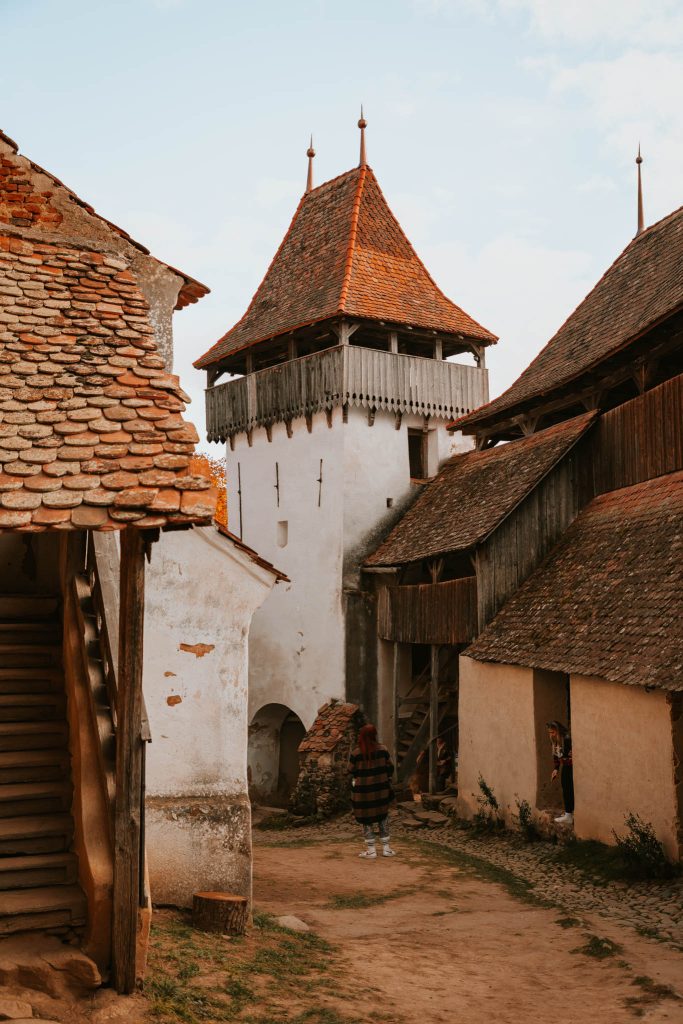
After the fall of the Roman Empire, a whole host of various populations passed through Transylvania – Goths, Huns, Slavs and Avars. It was, by all accounts, an enviable place to live.
By the Middle Ages, Transylvania had become part of the Kingdom of Hungary (around the 11th century). During this time, the Hungarian kings invited German-speaking Saxons to settle in the region to help develop towns, trade and defend its borders. During our own trip around Transylvania, we learnt that it was these Saxon settlers who built many of the fortified churches, citadels and towns that still exist today – including Brasov and Sighisoara.
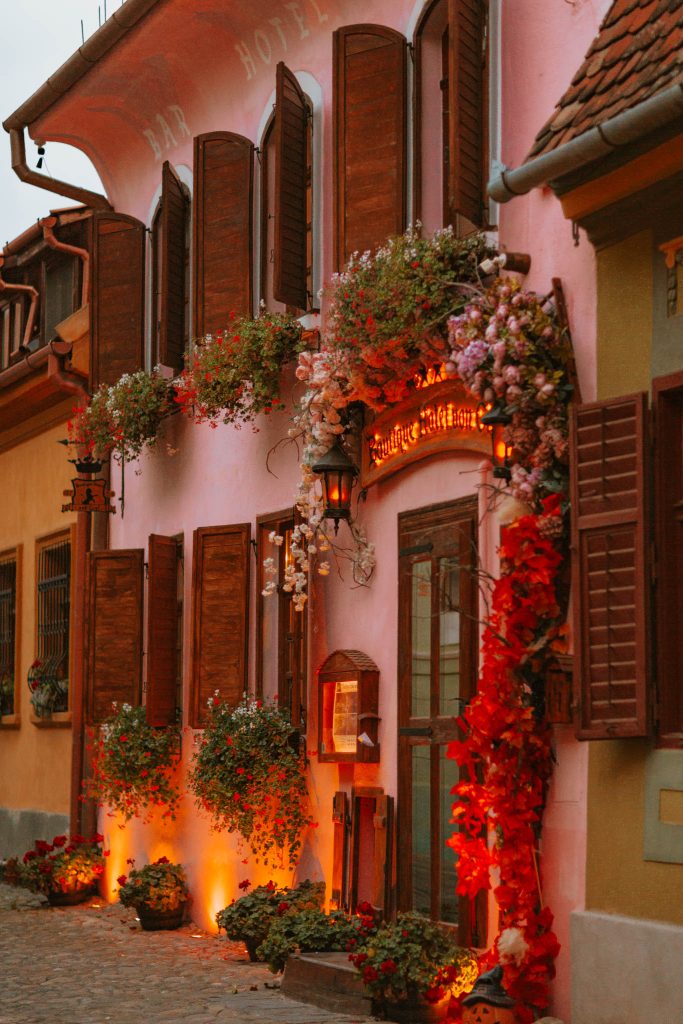
During this time, the region was also home to large numbers of Hungarians (Magyars), Romanians and Szekelys, resulting in the cultural mix that continues to define Transylvanian culture.
Perhaps Transylvania’s most famous epoch – and the one that is most heavily marketed – is when Vlad III – also known as ‘Vlad the Impaler’ – rose to power in the neighbouring region of Wallachia (although he was born in Sighisoara). It’s his brutal reputation and resistance to the Ottoman Empire that inspired Bram Stoker’s fictional Count Dracula – and is who has made Transylvania just so famous.
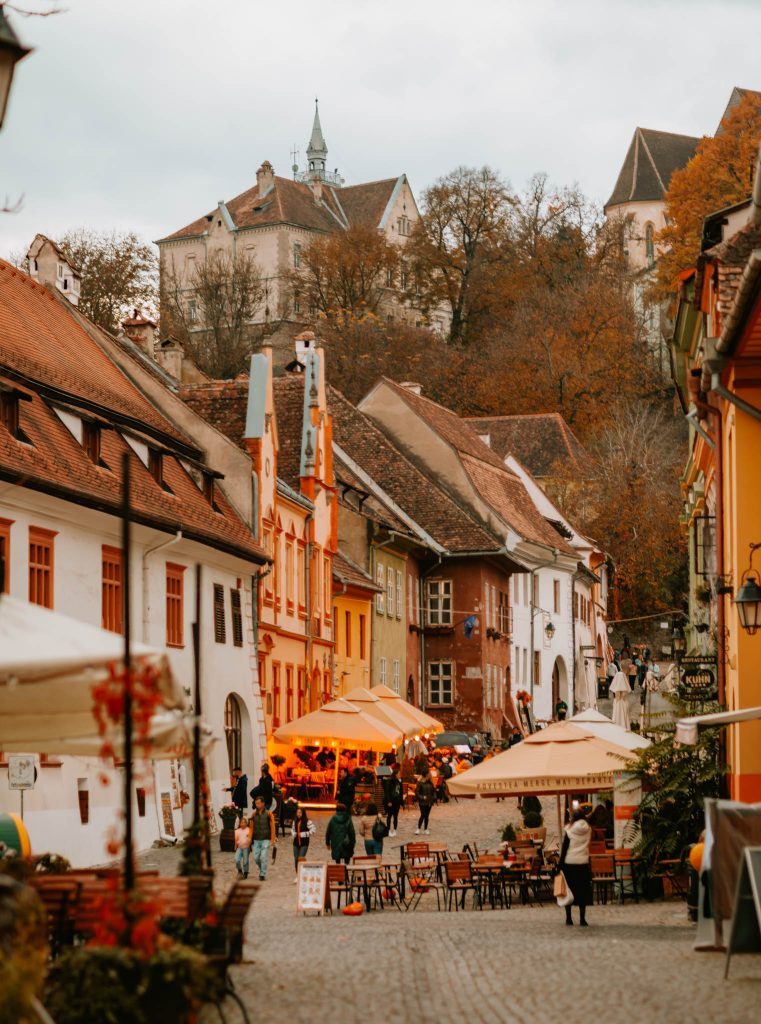
After a period of living under the Austro-Hungarian Empire, Transylvania was finally united with Romania in 1918, after the First World War. Since then – and particularly following the fall of the Communist regime in 1918 – Transylvania has undergone a quiet revival. Its cultural diversity, medieval towns and gorgeous landscapes have turned it into one of Romania’s top destinations – not just for tourists, but for proud Romanians, too.
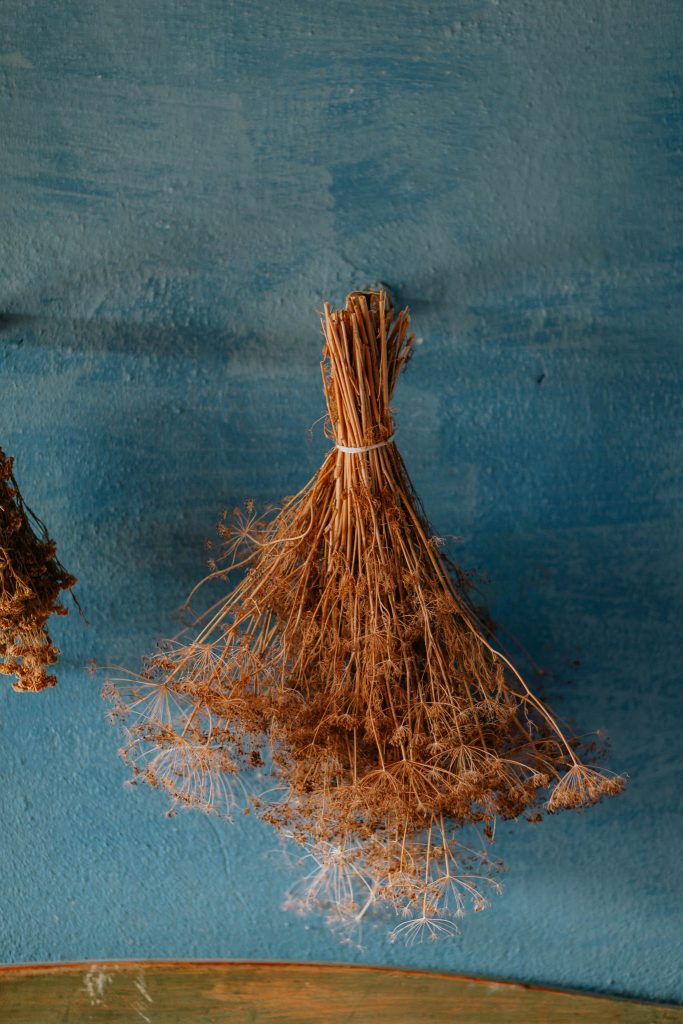
3. Was Dracula a Real Person?
Think Transylvania and you can’t help but bring to mind that blood-sucking Lothario, lurking inside some cold, dark castle.
Indeed, Dracula – everyone’s favourite vampire – has come to characterise all that is Transylvania. Along with his apparent neighbours, Frankenstein, a token werewolf and a ghoul or too, it’s these spooky bedfellows that have long defined the region’s personality (sometimes, to the detriment of the real Transylvania itself).
So, is there any truth in the story behind Dracula. Was Dracula a real person?
Well, sort of.
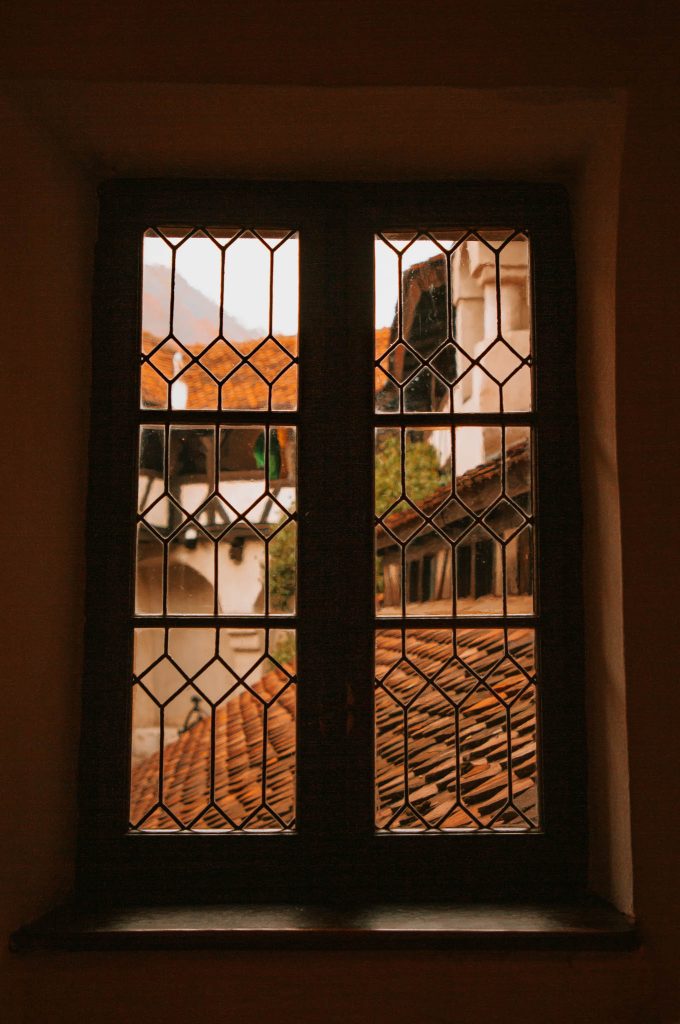
The fictional Dracula, created by Bram Stoker in his 1897 novel, was inspired in part by a real historical figure: Vlad III, also known as Vlad Tepes (Vlad the Impaler). Vlad was a 15th-century prince of Wallachia (a region just south of Transylvania), and earned his nickname thanks to his brutal method of punishing enemies – impaling them on long wooden stakes (you’ll see plenty of statues and graphic images of this in and around the region).
Crucially, Vlad wasn’t a vampire, but his reputation for cruelty was so legendary that it captured Stoker’s imagination centuries later.
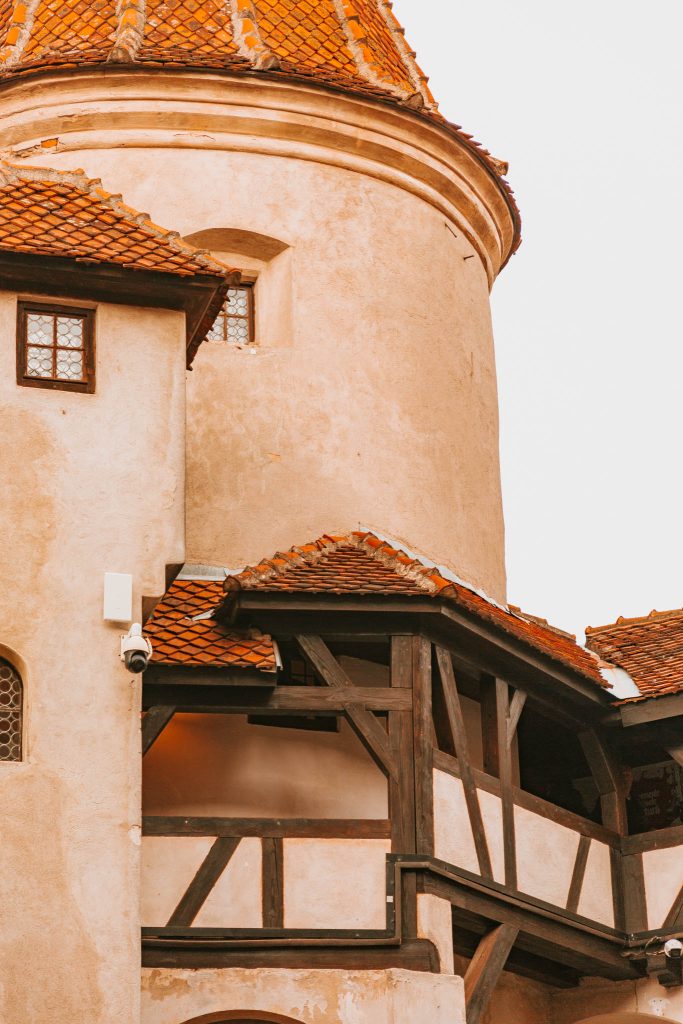
That said, there’s no evidence (disappointingly) that Vlad ever drank blood or lived in a spooky castle in Transylvania. In fact, his connections to the region are a bit stretched and exaggerated to bolster tourism. While he may have been born in the Transylvanian city of Sighisoara, and he did briefly hold Bran Castle (also known as Dracula’s Castle), it’s not the gothic lair you might think (more on this below).
So yes, while Dracula does have roots in a real person, the vampire we know today is mostly the product of fiction, fear and a bit of clever tourism.
4. Is Dracula’s Castle a Real Place?
While Dracula wasn’t (spoiler alert) a real person – what is said to be Dracula’s Castle is a very real place.
Officially known as Bran Castle, this gothic fortress is found just outside of Brasov and is the region’s most popular tourist attraction.
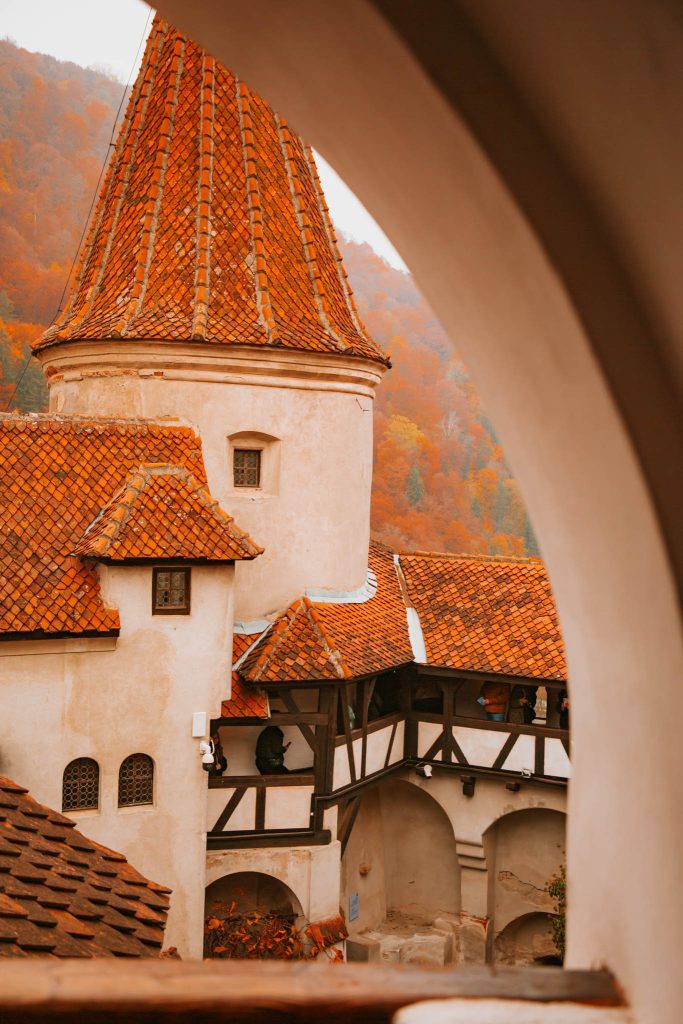
An amazing building, surrounded by misty forests and rolling hills, Bran Castle is an iconic place – and one with an incredible history. As we were visiting Transylvania over Halloween, we obviously had to make a stop there.
Arriving just as the fog was lifting over the valley, it’s obvious why Bran Castle is so often linked with Dracula. Its silhouette is the perfect, gothic cartoon castle – and inside, the building is filled with spiralling turrets, narrow alleyways and winding staircases.
However, it’s worth noting that the connection between Bran Castle and Bram Stoker’s Dracula is more symbolic than factual. While Bran Castle might exist, the fact it inspired Dracula’s castle is still contested.
Stoker, the author of Dracula, never actually even visited Romania – and there’s no evidence he based his fictional castle on Bran. Still, thanks to its eerie ambiance and clever marketing over the years, Bran Castle has now morphed into the unofficial ‘Dracula’s Castle’ – a title it wears proudly (and makes a lot of money from).
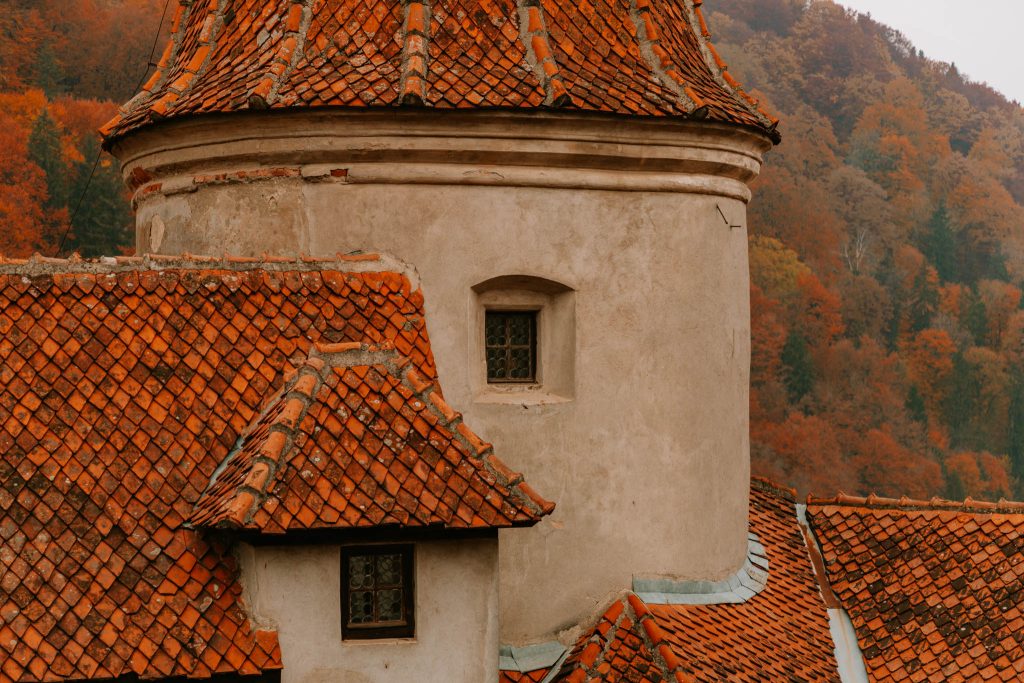
Whether it’s therefore worth visiting Dracula’s Castle is ultimately up to you. Personally, I felt that the castle was a little overhyped for what it is and the sheer number of tourists undermined any gothic or creepy atmosphere.
However – if you do want that iconic shot of what is a genuinely stunning castle, then you won’t be disappointed.
Why I Don’t Think Dracula’s Castle (Bran Castle) Is Worth Visiting
5. Best Places to Visit in Transylvania
Now that we’ve covered off that Transylvania is in fact a real place, let’s move onto the next big question: what are the main towns or cities in Transylvania?
During our own week-long road trip through the area, we came across a seemingly endless number of beautiful places, each filled with golden autumnal leaves, cobbled streets and the delicious scent of papanasi (fried doughnuts – a Romanian speciality).
Below is a quick summary of the prettiest and best places to visit in Transylvania.
Bucharest
While not technically part of Transylvania, Romania’s capital was (for us at least) a natural place to start our tour.
A city of contrasts, we loved that Bucharest was a blend grand communist-era architecture, leafy boulevards, centuries-old churches and a surprisingly great food scene. Its romantic charm was the perfect introduction to Romania – and from a more practical travel perspective, it makes sense to visit (we flew in to Bucharest from the UK, via Wizz Air).
10 Best Things to Do in Bucharest: Europe’s Hidden Gem
Brasov – Gateway to Transylvania
Nestled beneath the Carpathian Mountains, Brasov is not only a must-see place in Transylvania, but a popular base for exploring the wider region.
We travelled here from Bucharest and spent two nights in this absolute gem of a city.
With its lively old town, pastel-coloured baroque buildings and iconic Black Church, Brasov is the sort of place that’s perfect for aimless wandering. Ride the cable car to the top of Tampa Mountain for panoramic views and then reward yourself with a glass of Romanian wine in one of its cosy, candlelit restaurants.
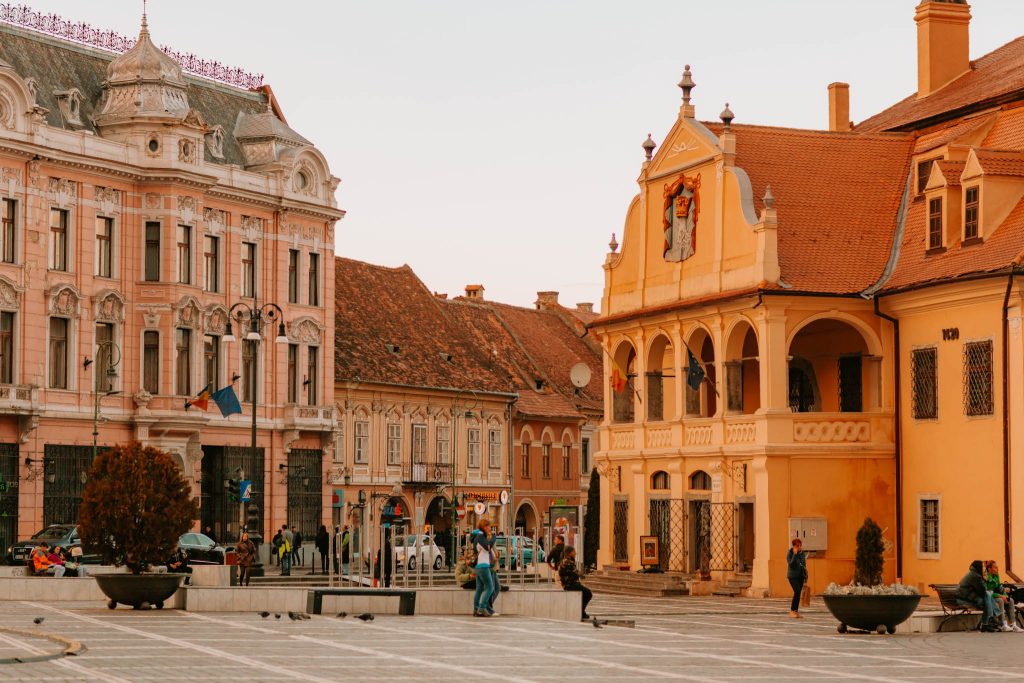
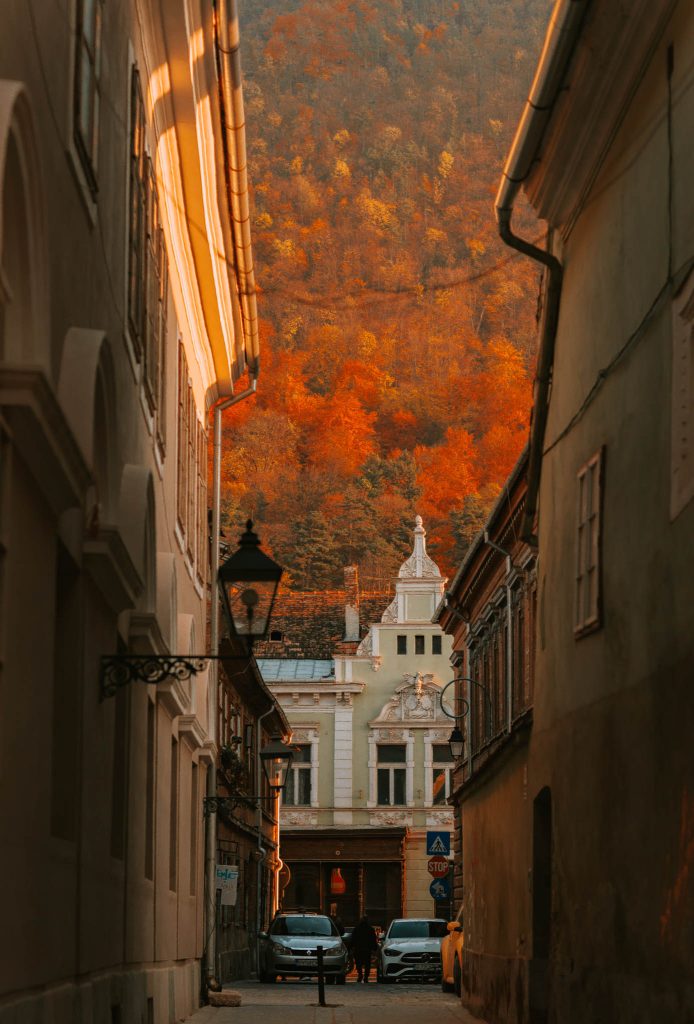
13 Top Things to do in Brasov, Romania
Bran Castle
Just a short drive from Brasov, Bran is home to Romania’s most famous castle: the one often just dubbed ‘Dracula’s Castle’.
Perched on a rocky outcrop and surrounded by forests, Bran Castle definitely looks the part (even if the Dracula connection is more myth than fact). Still, it’s a suitably moody and gothic stop – and the village of Bran itself is quite sweet, complete with gingerbtread cafes and mountain views.
Why I Don’t Think Dracula’s Castle (Bran Castle) Is Worth Visiting
Viscri – Home to King Charles
Tiny, quiet and full of charm, Viscri is everything you hope rural Transylvania would be.
With its whitewashed Saxon houses, horse-drawn carts and rolling meadows, the village feels like a film set from some olden day film. The UNESCO-listed fortified church is a must visit, alongside the chance to try traditional food made by locals (there are plenty of great restaurants in the village).
Fun fact: King Charles owns a house here that you can not only visit, but stay in.
Viscri was easily my favourite stop on our tour and definitely one of the best places to visit in Transylvania.
Is Viscri Worth Visiting? The Best Things to do in Viscri
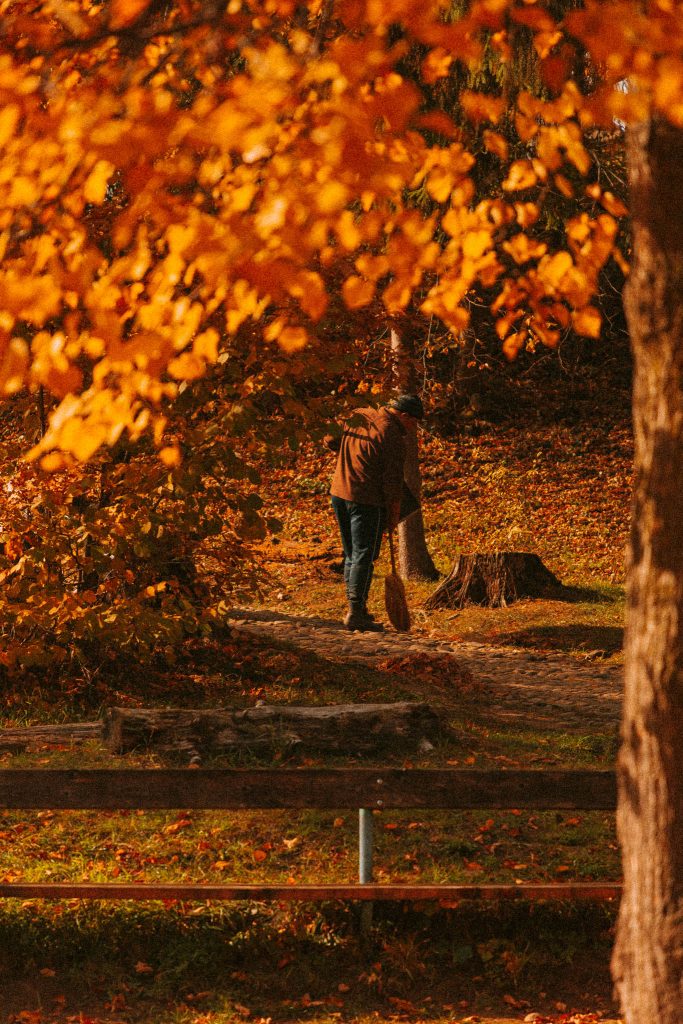
Sighisoara
If you’ve ever dreamed of stepping inside a storybook, Sighisoara is definitely your place.
One of Europe’s best-preserved medieval towns, it’s a mix of colourful houses, winding lanes and secret staircases. Climb the Clock Tower for a view over the red rooftops and wander its alleyways at dusk as the crows begin to caw in true Transylvanian style.
This is also said to be the birthplace of Vlad the Impaler: a tiny bit of Dracula lore that, for once, might actually be true.
We loved Sighisoara and could have easily spent longer there than one night there. It’s definitely one of the prettiest places in Transylvania.
10 Best Things to do in Sighisoara, Transylvania
Cluj-Napoca
A contrast to the region’s tiny villages stands Cluj Napoca – the unofficial capital of Transylvania.
With its bustling cafes, lively arts scene and a student energy, Cluj added a modern twist to our Transylvanian road trip. It’s a great place to experience contemporary Romanian culture, all while still enjoying plenty of history, green spaces and impressive architecture.
Is Cluj-Napoca Worth Visiting? My Honest Opinion
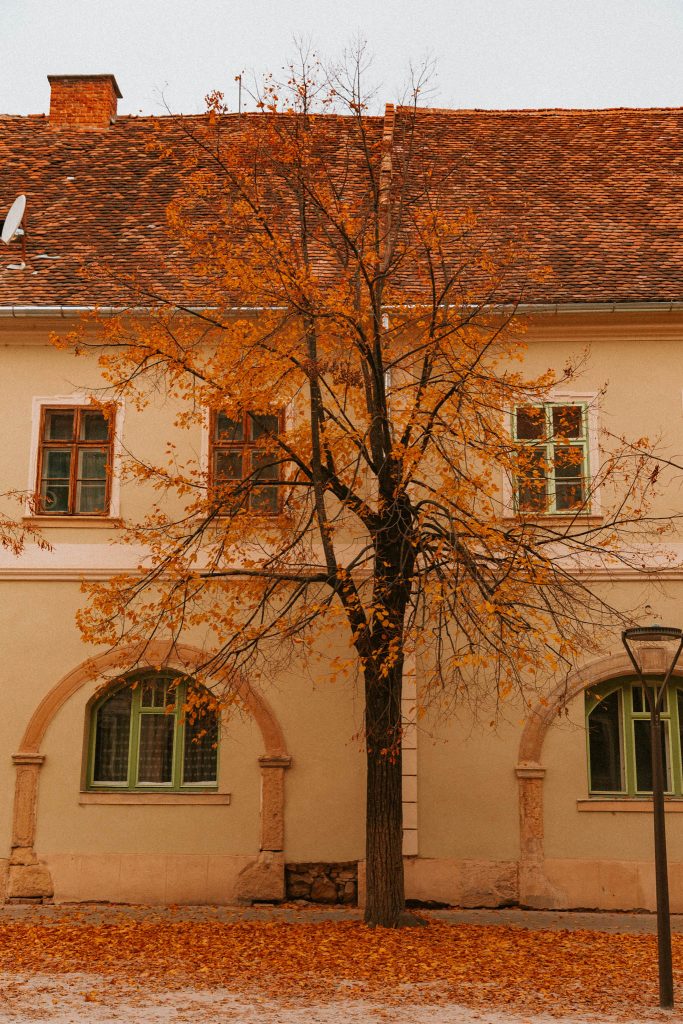
Other Top Places to Visit in Transylvania
Peles Castle (Sinaia): a fairytale castle surrounded by pine forests – and arguably even prettier than Bran.
Salina Turda: a salt mine turned underground theme park, complete with boat rides and a Ferris wheel. Surreal and completely unexpected.
Sibiu: sadly we didn’t have time to include Sibiu in our itinerary and really wish we could have visited. One of Transylvania’s most picturesque cities, known for its pastel buildings, cobbled streets, and quirky ‘eyelid’ windows.
6. What to do in Transylvania
While Transylvania’s medieval towns are definitely the region’s headline acts, it’s also the experiences and activities available there that make it so worth visiting.
From foraging in the forests to hiking some of the most beautiful mountain ranges in Europe, here are some of the best things to do in Transylvania.
Hike in the Carpathian Mountains
The Carpathians are wild mountain range that still (for now) feel relatively untouched. Whether you want a gentle forest walk or a full-on mountain hike, there’s a trail for pretty much everyone.
While we didn’t have time for a hike during our own road trip, our guide told us that popular routes lead from Piatra Craiului National Park, Bucegi Mountains and Apuseni National Park. Just make sure you go with a local guide if you’re venturing deep into the wilderness (not just because of the bears), but so that you can get the complete lowdown on all the gorgeous flora, fauna and folklore of the region.
Visit a Traditional Farm or Guesthouse
One of the best ways to experience authentic Transylvania is to stay at a family-run guesthouse (‘pensiuni’), especially in rural villages like Viscri, Cund or Crit. Many offer home-cooked meals and some will even let you help with seasonal tasks: herding sheep, milking cows, picking fruit, or baking bread.
Crit 217, found in (you guessed it) Crit, is a particularly popular place to stay – offering guests the chance for complete peace and quiet in the Transylvanian countryside.
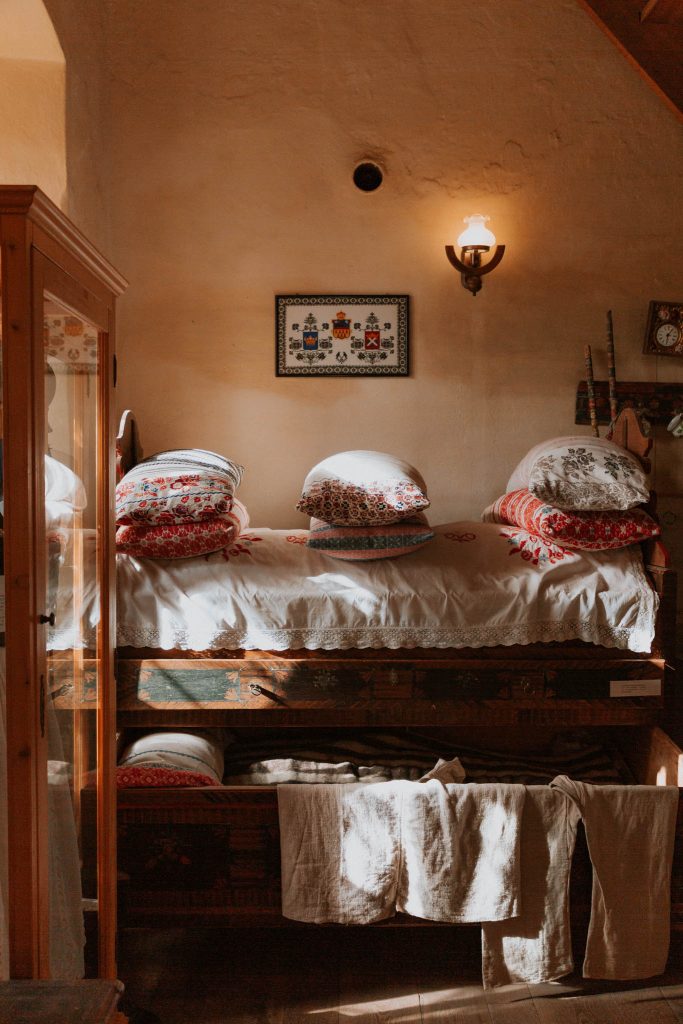
Explore Less Known Castles
Although Bran Castle tends to dominate the headlines, one of the best things to do in Transylvania is to definitely visit it’s less visited castles.
Peles Castle definitely comes top of the lust, alongside the spooky Corvin Castle. Lesser-known gems like Bethlen Castle or Banffy Castle also offer a more off-the-beaten-path feel.
Cycle Through Saxon Villages
Transylvania’s rolling countryside is perfect for a cycling trip – and we saw tons of cyclists during our own visit.
Quiet roads, sweeping views and sleepy hamlets make for a fairytale bike journey and you can rent bikes in larger towns like Brasov or Sighisoara, and follow mapped routes.
Learn a Traditional Craft
Many rural villages – including Viscri, where we visited – offer workshops where you can try your hand at weaving, pottery, wood carving, or egg painting.
What makes this so special is that these crafts genuinely aren’t just for tourists – they’re part of everyday life for many locals, especially among the older generation.
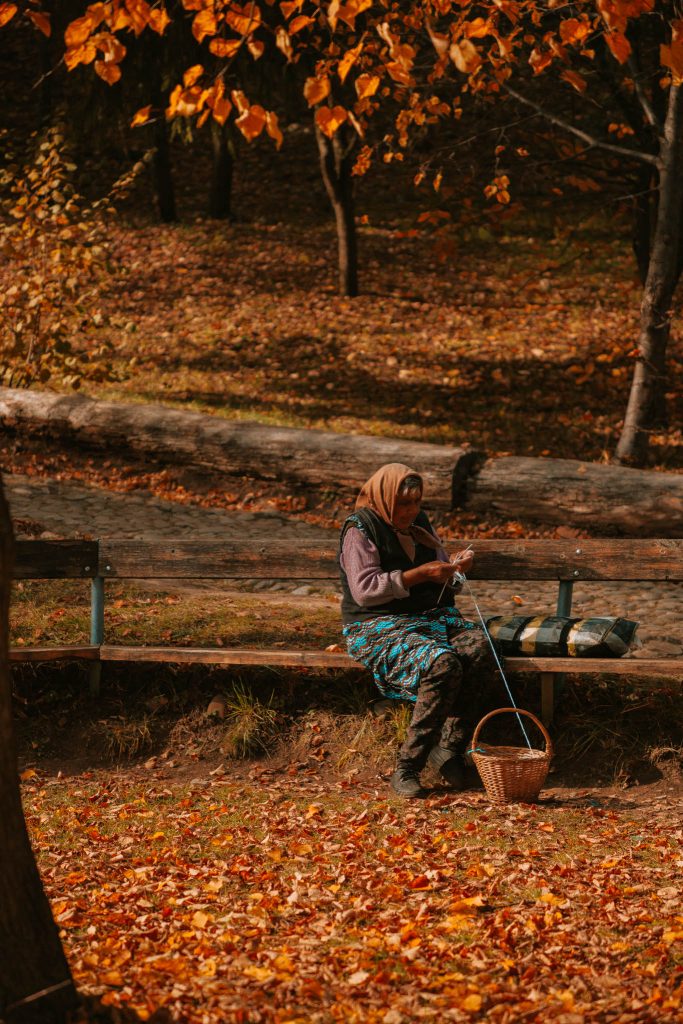
Enjoy Folk Music and Festivals
If you happen to visit Transylvania during a village or town festival, make sure you get involved.
Expect traditional costumes, folk dancing, live music and plenty of delicious food. Summer and autumn are the main festival seasons, but winter (around Christmas) is apparently magical – including carolling and masked rituals.
A list of the area’s annual festivals can be found here – definitely make sure you check through them before your own visit.
7. What is the Food like in Transylvania?
Before visiting Transylvania, I really had no idea what to expect when it came to the food.
Eyeball stew? Snail slime? Bat burgers?
Having previously visited Gdansk and (confession time) not loved Polish food (I can’t stand dill), I was a bit concerned that Romanian cuisine might also be similarly heavy or overly pickled.
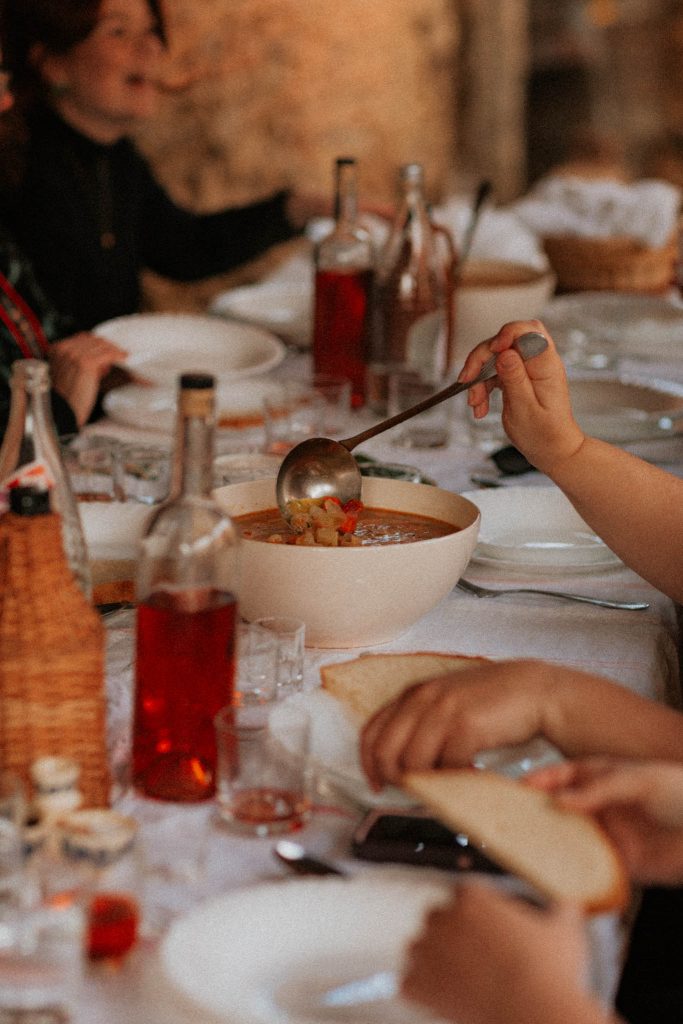
Thankfully, I couldn’t have been more wrong. The food in Transylvania was a genuine highlight of the trip and I can honestly say we didn’t have a single bad meal.
Transylvanian cuisine is hearty, seasonal and cosy. Over our week in Transylvania, we enjoyed slow-cooked stews, rich soups (ciorba), creamy polenta, roasted vegetables and plenty of red meat.
The food is actually quite eclectic, thanks to the region’s diverse cultural heritage, including Hungarian, Saxon, Romanian and Ottoman influences.
Transylvanian food we loved:
Ciorba de Burta (tripe soup): not for everyone, but this tangy, garlicky soup is a Romanian classic. I really enjoyed it with big wedges of bread and butter.
Sarmale: cabbage rolls stuffed with spiced pork and rice, usually served with sour cream and polenta.
Zacusca: a rich vegetable spread made from roasted aubergines, peppers, and tomatoes – we had it at breakfast and would happily eat it all day.
Plum brandy (tuica): Not technically a food, but it deserves a mention. Offered before (and sometimes after) meals – it’s strong, fiery strong and distinctly Romanian.
So, in short: don’t worry about the food in Transylvania – it’s delicious.
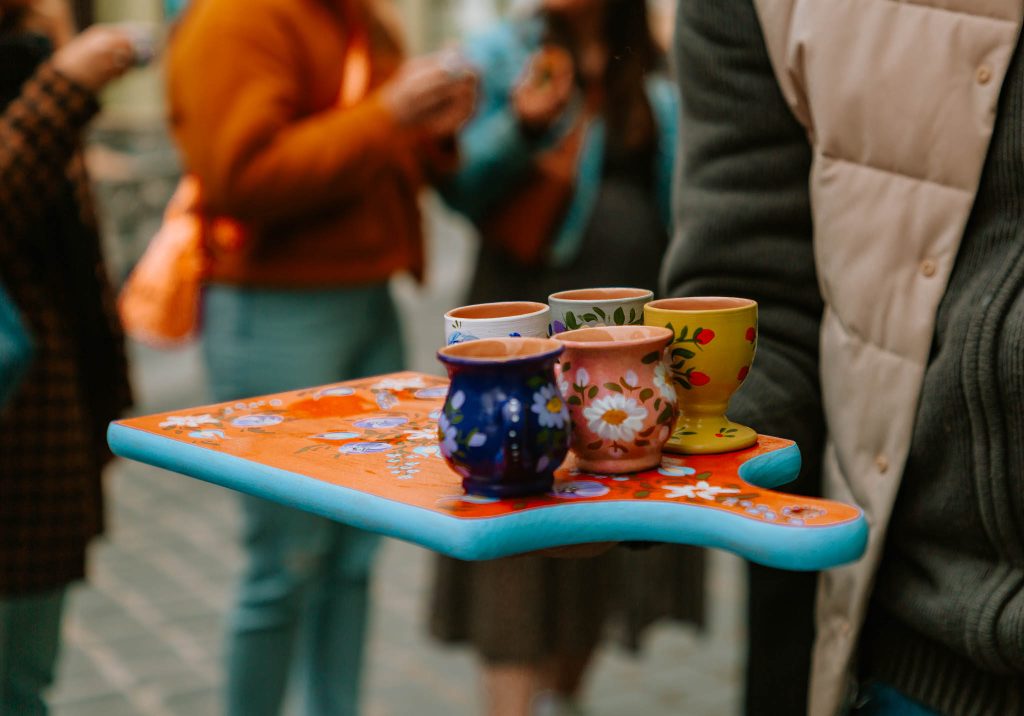
8. Is Transylvania Safe to Visit?
Yes, Transylvania is incredibly safe to visit.
In fact, it’s probably one of the places where I’ve felt most at ease while travelling – even with the threat of vampires, ghosts, and werewolves looming.
Crime levels in Transylvania are low, especially in the rural villages and smaller towns. People are friendly and helpful – especially if you’re staying in local guesthouses or exploring off the beaten track. We never felt unsafe walking around, even after dark, whether in bustling Brasov or quiet countryside spots like Viscri.
If you’re heading into the Carpathian Mountains for hiking or exploring, it’s worth checking weather conditions, taking a local guide if you’re unsure of routes and letting your accommodation know your plans.
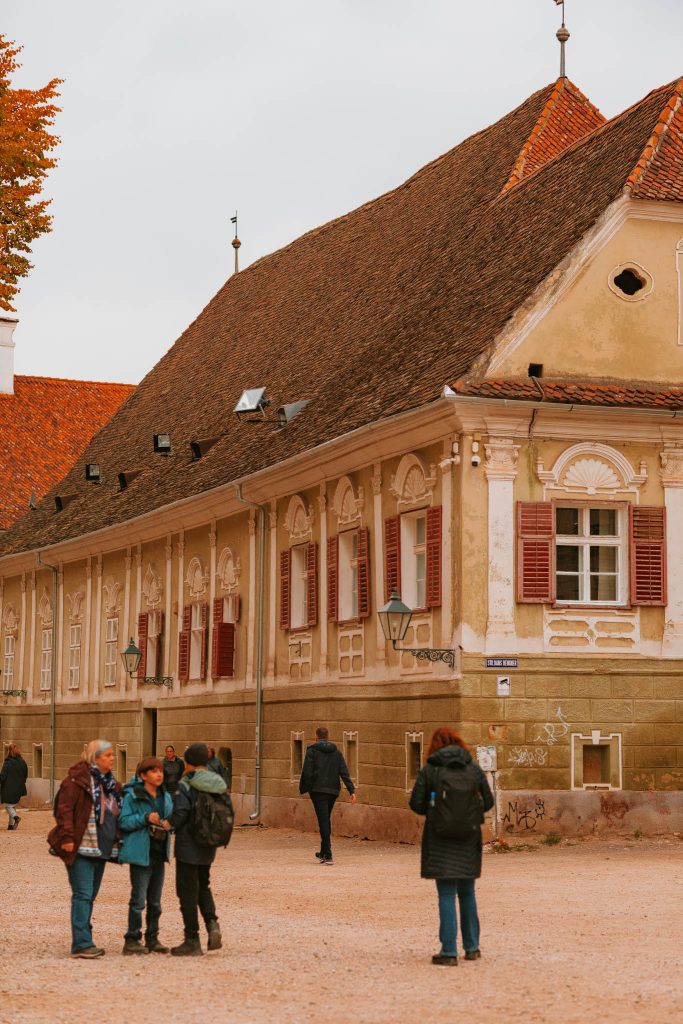
9. When is Best Time to Visit Transylvania?
Now, I may be bias as we visited Transylvania over Halloween – but I believe that autumn or fall is the best time to visit Transylvania.
With mist clinging to the forests and the smell of wood smoke drifting from village chimneys, autumn is when Transylvania is at its most atmospheric – cosy, yet a little bit magical, too.
The forests turn shades of amber, copper and red – especially in the Carpathians – which makes even the shortest drive feel cinematic.
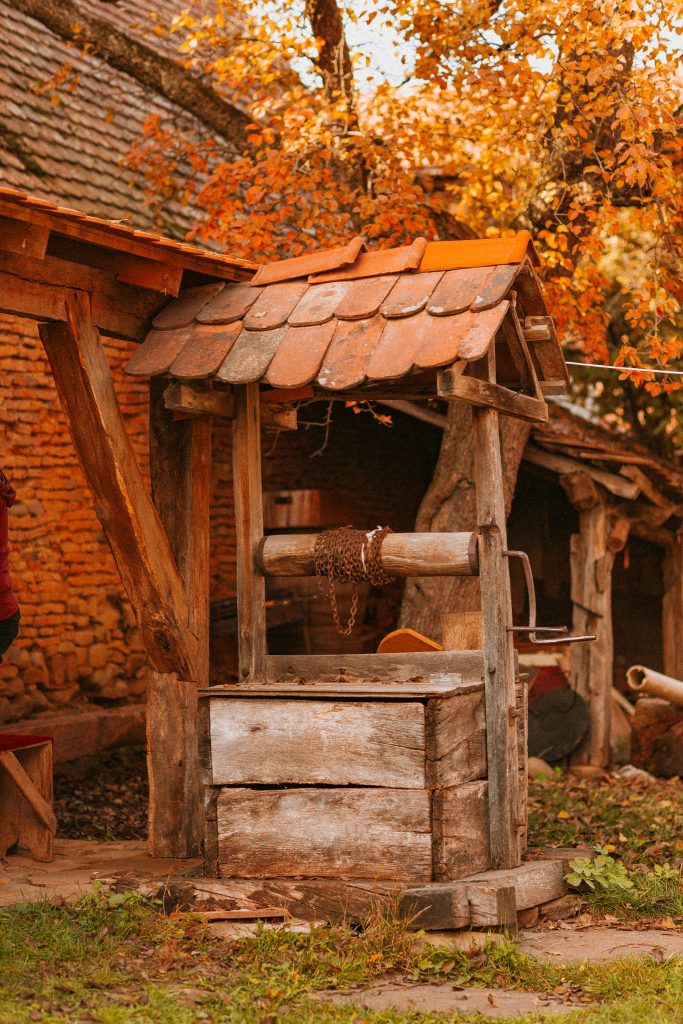
Autumn is also when rural traditions come alive. During our own tour of Transylvania, we came across harvest festivals, local shepherds parading their flocks down from the mountains and markets filled with seasonal produce (including plenty of pumpkins).
One of the biggest perks of visiting Transylvania in autumn is fewer crowds. Unlike the busy summer months, you’ll find the streets of towns like Sighisoara and Brasov are relatively quiet. Accommodation tends to be easier to book and often cheaper – although around Halloween, you may see a spike in tourism thanks to all those Dracula-themed events.
Autumn is also a great time to visit if you’re a foodie. The local markets overflow with mushrooms, plums, apples, walnuts and fresh cheeses. Look out for traditional harvest dishes like pumpkin pastries, hearty tripe soup and plum brandy, which locals might offer you in tiny glasses (we got a little tipsy on it in Viscri).
You’ll also find seasonal wines, particularly around the vineyards near Sibiu or Cluj, with autumn being the perfect time for tastings and tours.
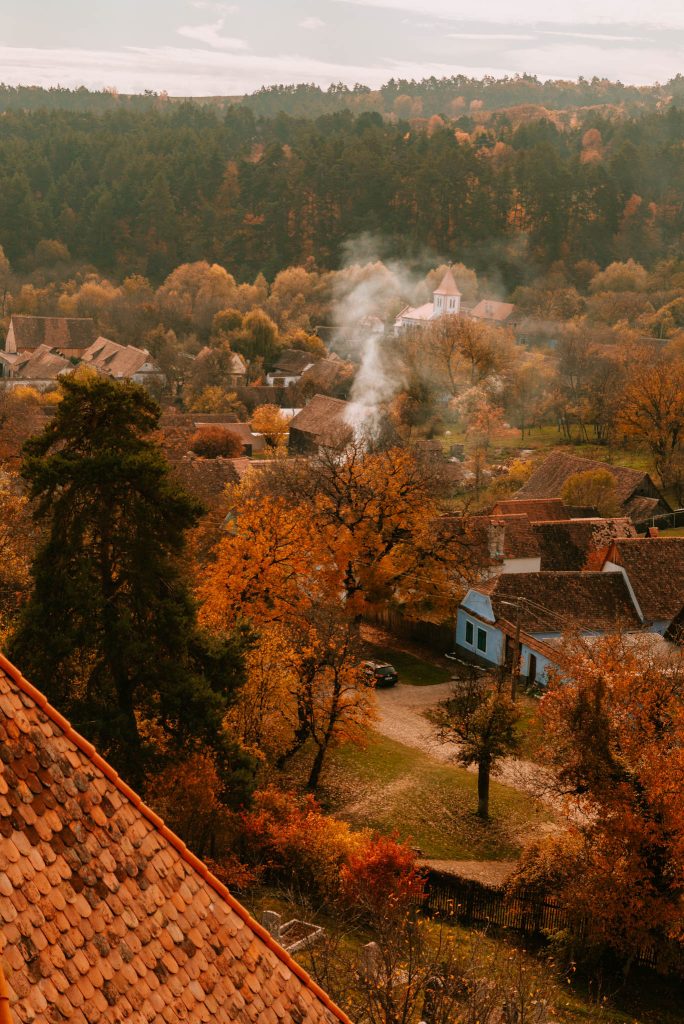
10. What to Pack for a Trip to Transylvania
Packing for Transylvania is all about layers and being ready for the unexpected – especially if you’re travelling in the shoulder seasons.
A quick note: we visited in autumn and expected it to be much colder than it was (we were there for the last week of October). As such, we had a suitcase full of knitwear, when in fact it was about around 18 – 20 degrees. Definitely therefore look ahead at the temperatures to make sure you aren’t caught out like we were!
Essentials for All Seasons
-
Comfortable walking shoes – You’ll be covering a lot of ground on foot, especially on uneven cobblestones and forest trails. Go for waterproof if you’re travelling in autumn or spring. Here is our list of our favourite stylish walking boots.
-
Layers, layers, layers – Transylvanian weather can shift quickly. Pack a mix of t-shirts, long sleeves, jumpers or fleeces – and a decent waterproof jacket.
-
A warm outer layer – Evenings can get chilly, particularly in the mountains or countryside (Brasov was much colder than Cluj, for example). A packable puffer or insulated coat is ideal.
-
Day bag or small backpack – For day trips to castles, towns, or hikes, a small rucksack is really handy.
-
Reusable water bottle – Tap water is safe to drink in most areas of Transylvania and many rural places won’t have shops nearby.
-
Adapter plug – Romania uses the standard European plug (Type C & F, 230V).
-
Torch or headlamp – Rural areas can get very dark at night (think: zero light pollution), so having your own light source can be handy.
If You’re Visiting in Autumn or Early Spring
-
Wool socks / warm tights – Essential for chilly mornings and long walks.
-
Gloves and a hat – Especially useful for early starts or nights.
-
Travel umbrella – Mountain weather can change in a blink.
-
Moisturiser / lip balm – The air can be dry, especially in higher altitudes or wood-heated homes. We found we had insanely dry lips during our own visit and went through plenty of balm.
If You’re Visiting in Summer
-
Sun protection – Sunglasses, sunscreen, and a hat are must-haves.
-
Lightweight clothes – Breathable fabrics like linen or cotton will be your friend in July and August.
-
Insect spray – Particularly useful in rural areas or near forests.
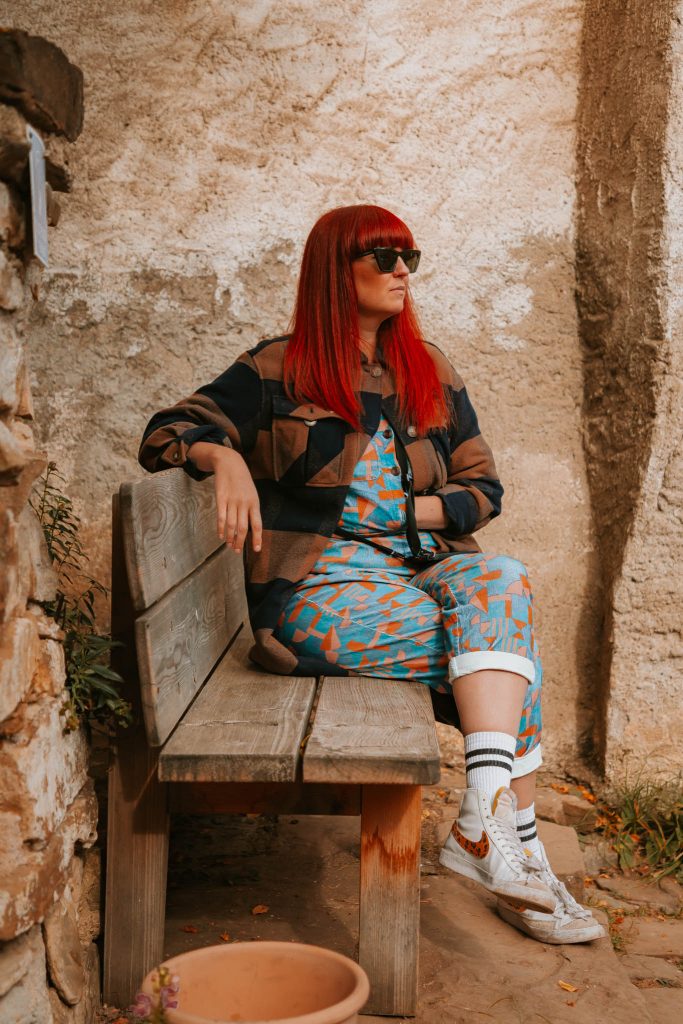
11. What Languages are Spoken in Transylvania?
Romanian is the official language spoken throughout Transylvania. It’s a ‘romance’ language, which means it shares some similarities with Italian, French and Spanish. If you speak any of those (sadly, I don’t) you might catch the odd familiar word or phrase.
That said, Transylvania is a beautifully diverse region and you’ll likely hear more than just Romanian.
Hungarian – Transylvania has a large Hungarian minority, particularly in regions like Harghita, Covasna and parts of Mures and Cluj. In towns like Targu Mures or Odorheiu Secuiesc, Hungarian is widely spoken.
German (Saxon dialect) – historically, Transylvania was home to a significant population of Transylvanian Saxons (ethnic Germans), especially in towns like Sighisoara, Sibiu and Brasov. While fewer people speak German today, you might still hear it among older generations or see German signage in older towns (we saw quite a few in Brasov).
English – thankfully, English is commonly spoken in tourist areas, especially among younger people, in hotels, restaurants and at attractions. While rural areas might be a bit more limited, most people are friendly and happy to help.
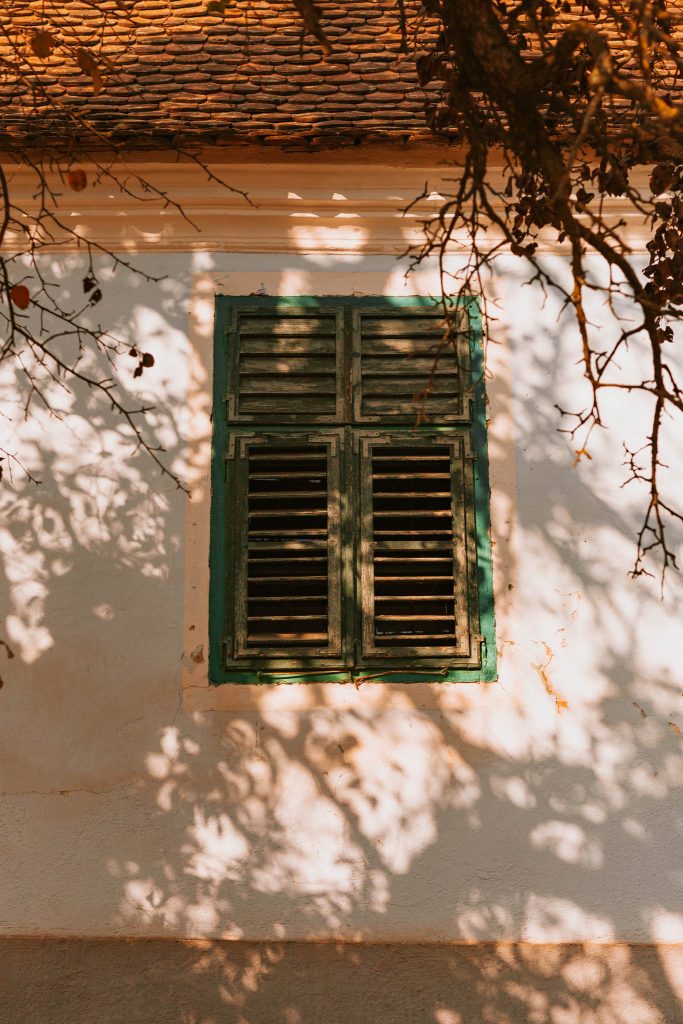
Final Thoughts: Everything You Need to Know Before Visiting Transylvania
So, and as we’ve confirmed – Transylvania is absolutely real – and much more than a gothic myth or spooky backdrop.
It’s a place of living history, breathtaking landscapes and a warm culture. Yes, you’ll definitely find castles, legends and whispers of vampires (if that’s your thing), but you’ll also discover colourful medieval towns, forest trails, old Saxon churches, lively markets and welcoming – living – people (not vampires).
If you’ve ever wondered whether Transylvania is worth visiting: it is. It’s worth going for the sunsets over rolling hills, the fresh plum brandy after a meal, the calm of fog in the mountains and hiking deserted trails.
You might want to visit Transylvania for the spooky stories, but (I promise you) you’ll stay for everything else.
